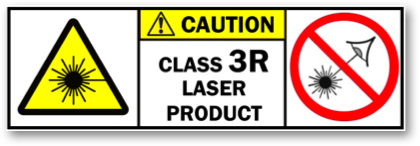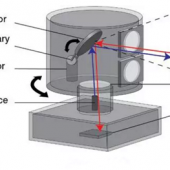WHAT IS A CLASS 3A LASER?
Class 3A lasers are considered safe when handled carefully. There is only a small hazard potential for accidental exposure. For visible-light lasers, Class 3A lasers’ output power is between 1 and 4.99 milliwatts. Class 3A Laser Pointer is essentially the same as the Roman numeral “Class IIIA” you may see on some lasers’ labels.
A Class 3A laser is low powered. It normally would not harm eyes during a momentary exposure of less than ¼ second. This is within the aversion response, where a person turns away and/or blinks to avoid bright light. Do not deliberately look or stare into the laser beam. Laser protective eyewear is normally not necessary. A Class IIIA laser is not a skin or materials burn hazard.
SAFE USE GUIDANCE – GENERAL
A Class 3A laser is low powered. It normally would not harm eyes during a momentary exposure of less than ? second. This is within the aversion response, where a person turns away and/or blinks to avoid bright light. Do not deliberately look or stare into the laser beam. Laser protective eyewear is normally not necessary. A Class 3A laser is not a skin or materials burn hazard.
However, a Class IIIA laser can be a distraction, glare or flashblindness hazard for pilots and drivers. NEVER aim any laser towards an aircraft or vehicle that is in motion. This is not a toy. Children can safely use Class 3 lasers only with continuous adult supervision.
EYE INJURY HAZARD
Class 3A visible-light green laser pointers are considered safe for unintentional eye exposure, because a person will normally turn away or blink to avoid the bright light. Do NOT deliberately look into or stare into the beam — this can cause injury to the retina in the back of the eye.
Be aware of beam reflections off glass and shiny surfaces. Depending on the surface, the reflected beam could be about as strong and as focused as a direct beam. The Nominal Ocular Hazard Distance (NOHD) for the most powerful Class IIIA visible-beam laser (4.99 mW) with a tight beam (0.5 milliradian divergence) is 104 ft (32 m).

For a 4.99 mW Class 3A laser with a less-tight beam that spreads out faster (1 milliradian), the NOHD is 52 feet (16 m). This divergence is more typical of consumer lasers.

If you are closer than the NOHD distance to the laser, there is a possibility of retinal damage if the direct or reflected beam enters your eye longer than about ? second. The closer you are to the laser and the longer the beam is in the eye, the greater the chance of injury.
AIRCRAFT AND VEHICLE SAFETY
NEVER aim any laser towards an aircraft or vehicle that is in motion. The bright light can flashblind, cause glare, or distract the pilot or driver.

A 4.99 mW Class IIIA laser beam can temporarily flashblind a pilot or driver, causing afterimages, within 530 ft (160 m) of the laser.
It can cause glare, blocking a pilot or driver’s vision, within 2400 ft (730 m) of the laser pointers.
It can cause distraction, being brighter than surrounding lights, within 4.5 miles (7.3 km) of the laser. The above calculations are for a 555 nanometer green laser pointer with a tight beam (0.5 milliradian divergence). These parameters are very conservative and thus result in the longest visual interference distances for a Class 3A consumer laser.
The more the beam spreads out, the shorter the hazard distances. For example, for a 4.99 mW 555 nm green laser pointer with a beam spread of 1 milliradian, divide the above numbers by 2 to find the visual interference distances.
Green is the most visible color to the human eye. It will appear brighter and more distracting than other colors of equal power. For red, divide the above numbers by about 5 to get an approximation of the visual interference distances. For blue, divide the above numbers by about 20.

